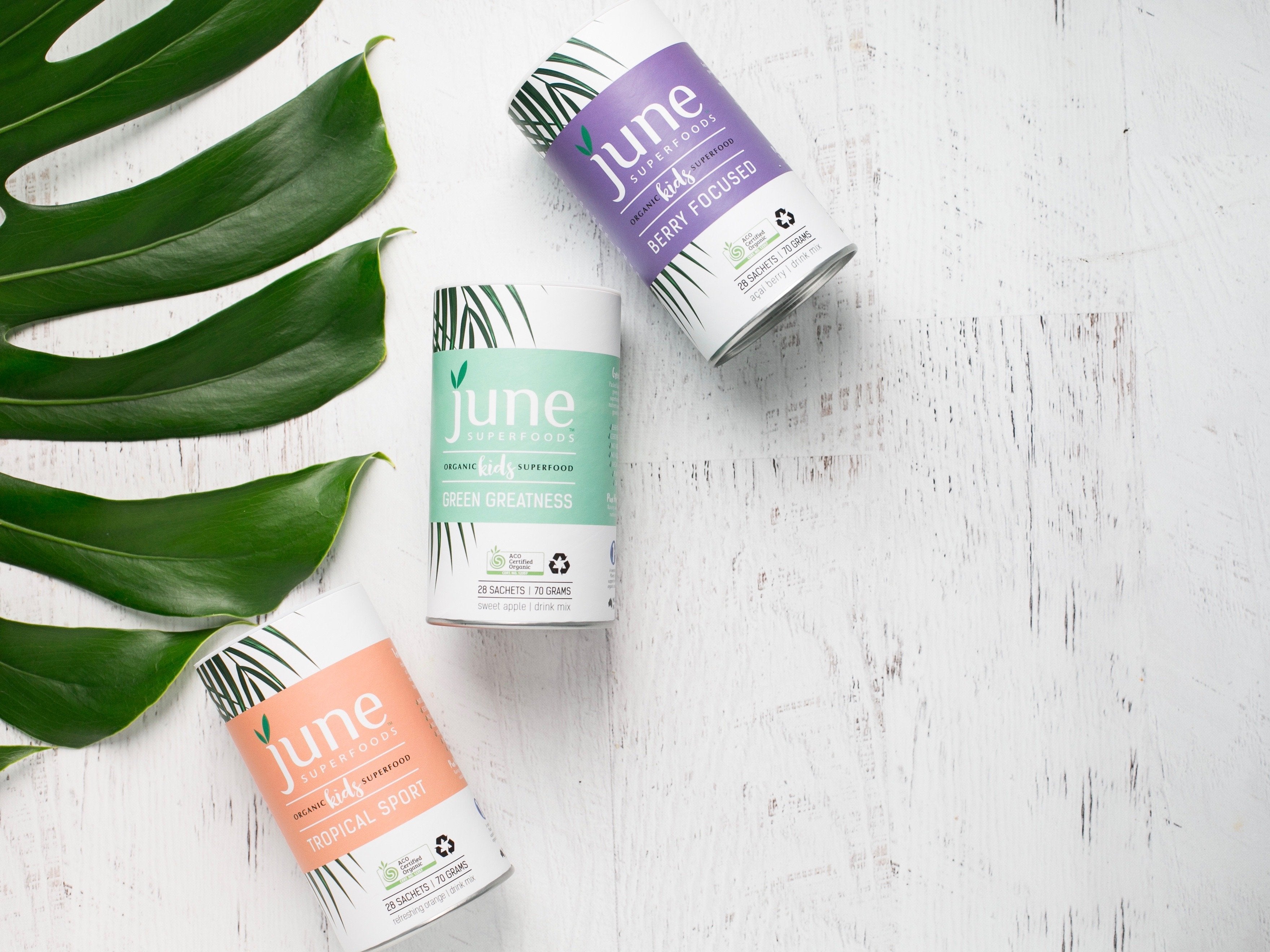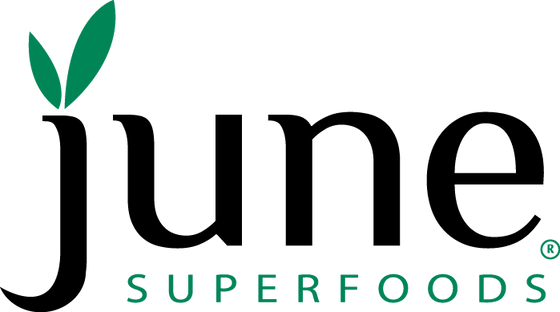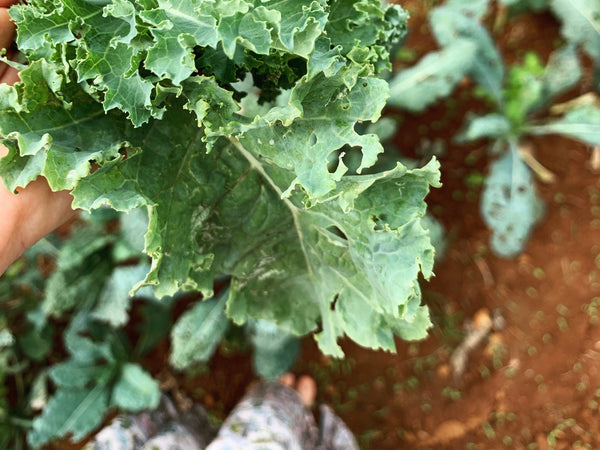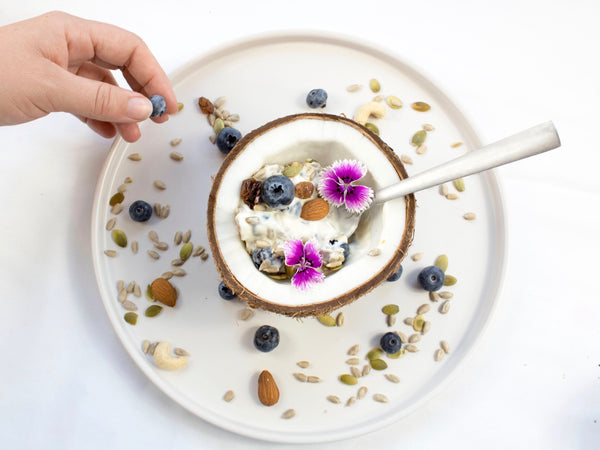What I Learned Manufacturing June Superfoods

Every day it seems another beautiful woman is drinking a green superfood smoothie on Instagram. She is fit, healthy, tanned and it seems if you drink what she's drinking surely you will look and feel that good, right? This is fantastic marketing, and we see it every day! I find many times I click over to the website where I can read about all the great benefits of the greens but can't actually find the list of ingredients from the label. My first question and yours as well should be, what are they hiding?
After creating June Superfoods, I became even more educated in the art of reading labels. In manufacturing supplements, there are tricks to make products look healthier than they are. Here are 5 label hacks that I always watch out for and scrutinise if I actually have the time.
5 Label Hacks
1. A long list of ingredients:
After creating my products I realised that when a product has a lot of ingredients it basically means that there is only a small percentage of each nutrient listed. If the ingredients add up to 100% and there are 50 ingredients, I can’t imagine the first ingredient being more than 5% of the product. So if the first ingredient is Acai well there may only be 5% acai in the whole product, and all the ingredients after acai are going to be less the 5% of the product, so that incredible superfood 20 ingredients down may only be in there at .05%. Also, long lists make it easy to hide ingredients like fillers, artificial flavours, and sugars because once we get past the first eight ingredients, we are either sold or moving on. Especially if like me you have a curious toddler pulling everything off the shelves below you.
2. Brackets:
This one was offered to me when I was creating my product. For instance, I added spirulina to my Green Greatness blend. Spirulina basically smells and tastes like fish, it is an algae after all. It is an amazing superfood, high in protein, omegas along with high levels of B12 so I wanted to include it, but anything above 5% of the product made it taste pretty nasty. I was determined to have a tasty greens powder! So I put it in at 5%. The manufacturer kindly noted that I could make a 'Greens Blend' then bracket all the greens together. Bulking the ingredients together under one blend would allow me to put Spirulina higher on the ingredient list.
Example: Greens Blend [spinach, barley grass, kale, spirulina] then aloe, apple, lemon. Brackets make the product look like there is more Spirulina than apple and lemon when in reality, this blend has more apple and lemon than spirulina. Watch out for brackets; there is a good chance the ingredients you think you are getting may be only a small percentage of the serving.
3. Organic (but not Certified Organic):
This one has been called out quite a lot and for good reason. I remember a brand called 'Organics' that had no organic ingredients. Nowadays companies are a bit savvier and will market a product as organic or with organic ingredients but may only have a few organic ingredients in the product. If a product in Certified organic you can rest assured that the company is paying a lot of money for that certification and every ingredient in their product was scrutinised, from origin to final product. Plus there must be at least 95% organic ingredients to be considered certified organic. I always look for the ACO Certified Organic stamp as I know just how strict they are ;)
4. Inactive Ingredients:
Usually, you will see this on vitamin labels. It basically means fillers. Maltodextrin, magnesium stearate, titanium dioxide, artificial colours (never acceptable). It’s also not always clear how much is in each vitamin. Choosing whole food vitamins like Megafood and New Chapter which list all the ingredients honestly are my go-to for vitamins for a prenatal or nutrient specific formulation.
5. Protein powder/flax meal:
These ingredients aren’t bad, they are great as an added source of protein or fibre, especially if the company is marketing the product as a protein powder or fibre supplement. I question these ingredients when they are the first or second ingredient on the list. If they are high in the list of ingredients, then they may be acting as fillers to keep costs down. Pea protein and flax meal were offered to me when I was creating June. When I asked why the manufacturer said that organic superfoods are expensive, I could cut costs and increase serve-size by adding these ingredients. No thanks, I prefer to stick to superfoods that are dense in nutrients without any fillers and keep serving size at the recommended level of nutrients required for kids.
I always advocate for choosing whole-food nutrition with one ingredient in place of supplements. But sometimes we need a boost. If we have kids and we find they are only eating bland white foods with limited nutrients, this is when we need to step in and add nutrients to their diets. When this is the case, it’s great to have a look at health food stores and start scrutinising labels.
If you have any questions about something in your pantry or vitamin cupboard, please leave a question in the comments section below. With good health, you can create an abundance of energy and with energy anything is achievable.
Leave a comment
Comments will be approved before showing up.




Kristin Derrin
Author
Kristin Derrin is a certified nutritionist, health practitioner, mum and the founder of June Superfoods, a range of certified organic kids superfood supplements that contain natural fruit and vegetable nutrients to support kids growth and development naturally. Kristin created June Superfoods after noticing a gap in the market for high-quality organic health products for kids. This prompted her to create a product with the highest quality organic ingredients; no added sugars, fillers, or anything artificial.